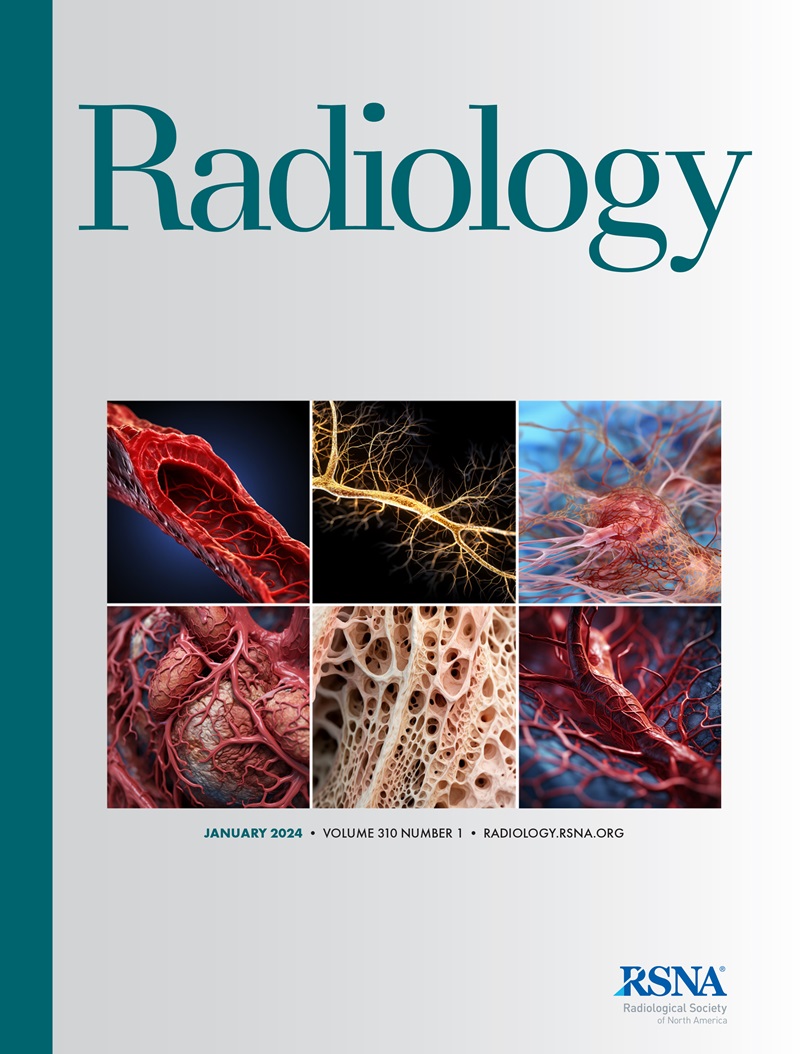我怎么做:ct引导下经皮经胸肺活检。
IF 15.2
1区 医学
Q1 RADIOLOGY, NUCLEAR MEDICINE & MEDICAL IMAGING
引用次数: 0
摘要
胸部影像学用于筛查或评估肺部病理是最常用的影像学检查之一。在横断影像研究中对持续性肺结节、肿块或实变的识别和确认需要额外的诊断测试来确定确切的病理异常。诊断检查可包括痰细胞学检查、胸腔穿刺、经支气管吸痰或经皮经胸肺活检(PTLB)。由于影像学和医学技术的进步,ct引导下的芯针活检在很大程度上取代了透视引导下的细针穿刺。PTLB的目标是准确定位不同大小、形态特征和位置的肺病变,同时获得足够的样本用于肿瘤的组织学诊断、微生物学评估和分子谱分析。PTLB通常由普通放射科、胸科或介入放射科医师执行,必须精确有效地执行以满足这些目标。潜在的并发症可能危及生命,需要及时识别和处理。因此,所有执行PTLB的放射科医生都应该精通原理、技术和该领域的最新发展,为患者提供安全、有效和高效的护理。在我们的机构,介入放射学团队执行所有PTLB程序,并装备精良进行ct引导下的肺活检,严格遵守本文概述的原则。本文章由计算机程序翻译,如有差异,请以英文原文为准。
How I Do It: CT-guided Percutaneous Transthoracic Lung Biopsy.
Imaging of the chest for screening or evaluation of lung pathology is one of the most commonly performed radiologic studies. The identification and confirmation of persistent pulmonary nodules, masses, or consolidations on cross-sectional imaging studies warrants additional diagnostic testing to determine the exact pathologic abnormality. Diagnostic work-up may include sputum cytologic examination, thoracentesis, transbronchial aspiration, or percutaneous transthoracic lung biopsy (PTLB). Due to advances in imaging and medical technology, CT-guided core needle biopsy has largely replaced fluoroscopic-guided fine-needle aspiration in PTLB. The goals of PTLB are to accurately target lung lesions of varying sizes, morphologic characteristics, and locations while obtaining adequate samples for histologic diagnosis, microbiologic assessment, and molecular profiling of tumors. Commonly performed by general, thoracic, or interventional radiologists, PTLB must be executed with precision and efficiency to meet these objectives. Potential complications can be life-threatening and require prompt recognition and management. Therefore, all radiologists performing PTLB should be well versed in the principles, techniques, and latest developments in the field to provide safe, effective, and efficient care to their patients. At our institution, the interventional radiology team performs all PTLB procedures and are well equipped to perform CT-guided lung biopsies, adhering closely to the principles outlined in this article.
求助全文
通过发布文献求助,成功后即可免费获取论文全文。
去求助
来源期刊

Radiology
医学-核医学
CiteScore
35.20
自引率
3.00%
发文量
596
审稿时长
3.6 months
期刊介绍:
Published regularly since 1923 by the Radiological Society of North America (RSNA), Radiology has long been recognized as the authoritative reference for the most current, clinically relevant and highest quality research in the field of radiology. Each month the journal publishes approximately 240 pages of peer-reviewed original research, authoritative reviews, well-balanced commentary on significant articles, and expert opinion on new techniques and technologies.
Radiology publishes cutting edge and impactful imaging research articles in radiology and medical imaging in order to help improve human health.
 求助内容:
求助内容: 应助结果提醒方式:
应助结果提醒方式:


